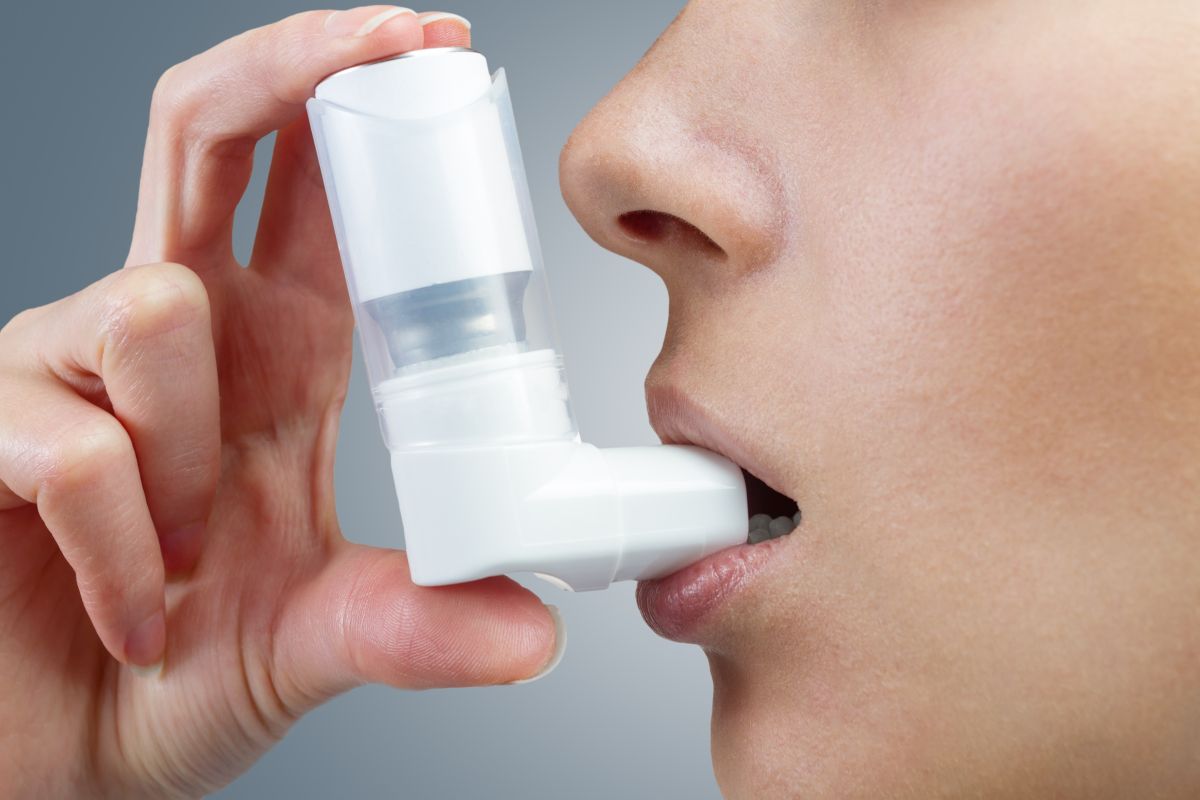UP govt to conduct grand roadshows in India and abroad for Maha Kumbh
Apart from this, approval has been granted for the purchase of 220 vehicles for the event.
The term “asthma” is derived from the Greek word ‘aazein’, which means “to exhale with an open mouth; to gasp.” This condition is the most common cause of school absenteeism, accounting for an estimated 14 million missed school days.

Representational image (Photo: IStock)
The term “asthma” is derived from the Greek word ‘aazein’, which means “to exhale with an open mouth; to gasp.” This condition is the most common cause of school absenteeism, accounting for an estimated 14 million missed school days.
Bronchial asthma tends to have developed steadily since the 1970s, and it now affects an estimated 4 to 7 per cent of the global population while around 3.3 of children are affected by childhood Bronchial Asthma in India.
The ISSAC study examined the prevalence rates of Bronchial Asthma and atopic disorders in 155 centres in 56 countries over a one-year period in 7, 21,601 children aged 6 – 7 years and 13 to 14 years, respectively. In the Indian subcontinent, incidences grew by +0.02 and +0.06 percent per year among children aged 13 – 14 and 6 – 7 years.
Advertisement
Triggering of Asthma
According to studies, viruses tend to infect the lungs, which is another potential root cause of asthma. Second-hand cigarette smoke is additionally a significant and generally known cause of childhood asthma. It is also proven that toddlers of smokers are more inclined to develop asthma than children of nonsmokers.
Asthma is growing more prevalent in children aged one to fourteen as a result of allergen exposure, environmental pollution, chemical exposure, hereditary factors, dietary choices, and antibiotic usage.
Asthma may be elicited by certain conditions such as cold or other respiratory infections, feeding might trigger asthma in infants, sturdy emotional reactions like crying or laughing, gastrointestinal reflux and changes, or extreme weather condition.
Diagnosing Asthma
Diagnosis of asthma in children, particularly those under the age of five, can be difficult. This is because the major symptoms of asthma like wheezing and coughing, can be caused by other illnesses in newborns and young children.
Furthermore, diagnostic tests used to determine how well or normally someone is breathing cannot be used easily or accurately with children under the age of five.
Asthmatic children frequently cough and wheeze, as well as experience chest tightness and shortness of breath. There are a few symptoms that indicate a child might be suffering from asthma such as difficulty in breathing or shortness of breath, wheezing, a high-pitched, whistle-like sound when exhaling and short periods of coughing and wheezing between periods of time with no symptoms.
Frequent or chronic symptoms with episodes of worse wheezing and coughing and prevalent infections or allergies that might trigger seasonal changes are also key signs of asthma.
If a child is gasping for air, inhaling so hard that the abdomen is sucked under the ribs, or has difficulty speaking due to limited breathing, parents should seek immediate medical attention. These are the symptoms of severe asthma, which can be fatal.
Homeopathic treatment of Asthma
Treatment aims for young children with asthma include preventing asthma attacks by treating inflammation in the breathing passages and utilizing natural therapies to cure asthma without producing adverse effects.
Homeopathic remediestake a holistic approach while treating children with asthma. It investigates not only the symptoms experienced by a child during an attack, but also all the changes and variations that occur on the physical, mental, and emotional levels. This aids in determining how a child’s health and well-being has changed.
Homeopathic treatment of asthma considers both genetic and environmental triggers, completing the child’s constitutional portrait while activating immunity by treating the source of the sickness rather than just the illness state or diagnosis.
A study conducted in India on a group of children suffering from clinically-defined asthma, who had previously been treated unsuccessfully with conventional medicine, showed significant benefits with the use of individually-prescribed homeopathic remedies for a period of two years — with reduced recurrence of asthma attacks. Results were assessed to measure the severity of Dyspnoea.
At the end of the allotted two-year period, the results were analyzed. It was found that asthma was controlled in 60.5% of children who’d been treated with homeopathy, while ‘some control’ was achieved in a further 21%.
The homeopathic remedies used in the study were Arsenicum Album, MercuriusSolubilis, HeparSulphuricum, ArsenicumIodum, AntimoniumTartaricum, Pulsatilla and CalcareaCarbonicum.
Homeopathic treatment aids in relieving asthma symptoms and treats the root cause of the condition.
A few of the often prescribed homeopathy medicines for the condition includes, Antimonium Tartwhich helps patients who wake up in the middle of the night with severe respiratory problems, Arsenic Album cures bouts of suffocation and stops coughing, wheezing, and difficulty breathing. SpongiaTosta is good forpatients with a deep or barking cough.
Similarly, Ipecac is recommended for wheezing and breathing problems that get worse with movement, and Natrum Sulfur is given to patients with a chronic cough with green expectoration. These homeopathic remedies on hand are usually necessary because asthma episodes occur more frequently and worsen between 4 and 5 a.m.
By treating a child with homeopathic remedies for asthma, the symptoms are far more likely to reduce and clear completely over a period of time.
(Dr. Mukesh Batra, Founder & Chairman, Dr.Batra’s Healthcare)
Advertisement